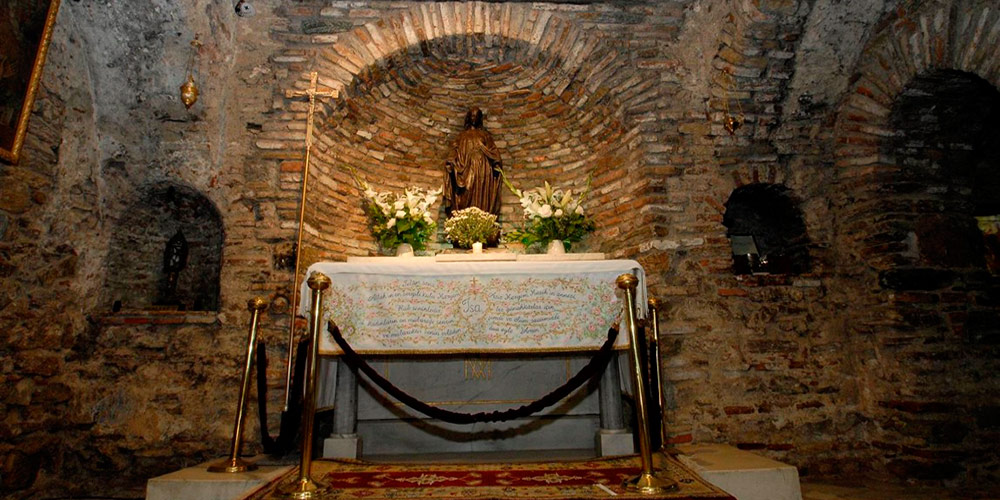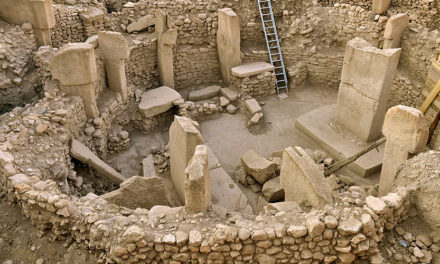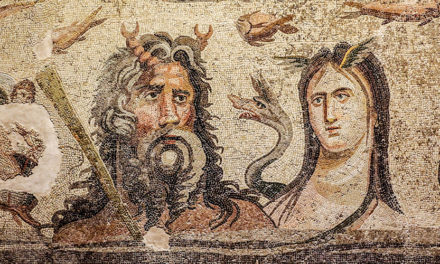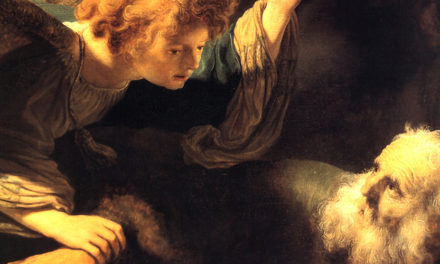House of Virgin Mary in Ephesus was not known till Anne Catherine Emmerich’s vision. The paralysed German nun who had never been to Ephesus had a vision of the House of the Virgin Mary and described it in detail to the German writer Clemens Brentano who later published a book about it. Catherine Emmerich died in 1884. In 1891 priests and historians from Izmir read about her vision and found a little building which corresponded with Emmerich’s descriptions.
Archeological evidence showed that the little house was from the 6C AD but that the foundations were from the 1C AD. Proving that some people restored this home. What was intesting that every year on August 15th some villagers came here and made ceremonies under the name Panaghia Kapulu. First they were asked why they make these ceremonies. Like so many in the world without knowing what Christmas of Easter means, they did not have any clue. Historians searched the word Panaghia Kapulu and found out that it means Virgin’s Door. August 15th, still celebrated as the assumption date of Virgin Mary. From these indications they thought this is the house that Virgin Mary spent her last years.
The house was officially declared a shrine of the Roman Catholic Church in 1896, and since then it has become a popular place of pilgrimage. It has been running as an active chapel over a century. Pope Paul VI visited the shrine in July 26th 1967. After Pope’s arrival approximately 1.5 million people from different faiths and religion visit this house. The other indication that Virgin Mary died in Ephesus is the writing of John of Damascus in 8th century. John mentioned that in 458 AD Queen Pulcheria requested Bishop of Jerussalem to transport the sceleton of Virgin Mary to Constantinople. When St. Paul arrived in Ephesus in 53AD he found there people who had already been evangelized. It is likely that Virgin Mary and St. John arrived Ephesus beween 42-48AD.
There is an underground spring, according to local tradition before tasting the water or dousing one`s hands, one must make a wish. The supporters of the belief that Virgin Mary lived her last years and died in her hut near Ephesus base their theory on two main points.
The presence of the Tomb of St. John and St. John’s Basilica in Ephesus: Jesus Christ, before dying on the cross, entrusted to St. John his mother (John 19:26-27). It is believed that after the crucifixion of Jesus, St. John left Jerusalem and came to Ephesus, one of the biggest and safest cities of its time (capital of the Asia Minor province of the Roman Empire), and built a small hut for Virgin Mary just outside Ephesus in order to protect her from the non-Christian community of Ephesus.
The presence of Church of Mary, the first basilica of the world dedicated to Virgin Mary, in Ephesus: In the early centuries of Christianity, places of worship were dedicated only to persons who lived or died in the locality.
The burial site that was described by Kathleen Emerich was not found. According to bible not only her soul but also her body was ascended. Probably she was 54 years old when she came to Ephesus and assumed at the age of 63. The mountain that the house is located, approximately 1200 feet above sea level.
Altough Mary’s existance in Ephesus is not proved, the site is a very popular spiritual site. Not only Christians but Moslems also visit the House. Name of Mary is mentioned in the book of Koran more than Bible. According to Koran, Mary is the mother of a prophet therefore she is considered as a holy person. Her name is mentioned as Meryem in the book of Koran which is a very common name in Turkey. Visitors may notice walking sticks, carpets… donated from the people whose wishes came true. Visitors also write their wishes on a tissue and attach them on designated board. There used be a tree for it. This a shaman tradion which became a custom here today.
SOURCE: Ephesus travel guide





